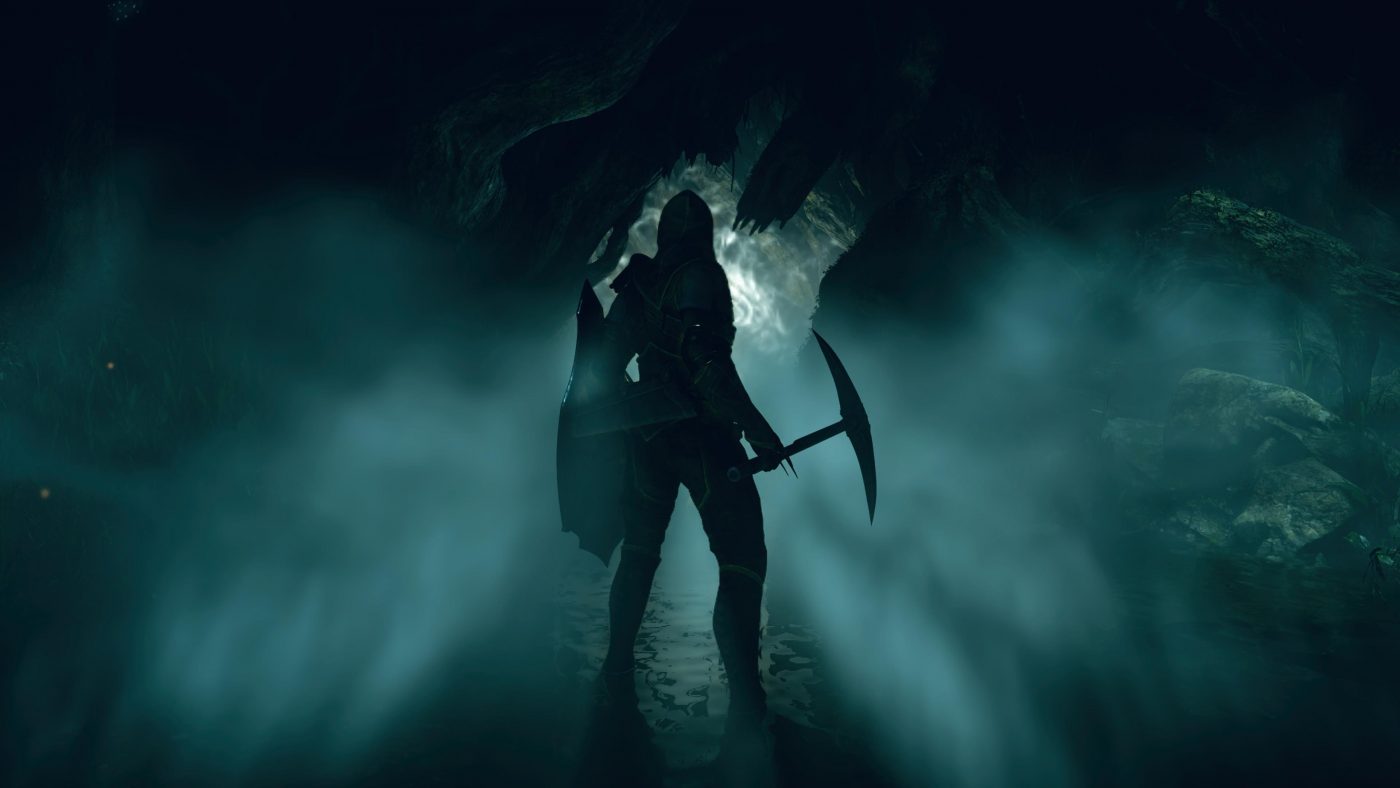The Depraved Chasm in Demon’s Souls is a stinking, poisonous valley lined with rotting scaffolds that break underfoot. It’s populated by a motley of deformed mutants who lunge at you from the shadows or play dead before jumping up and stabbing you in the back. You begin the level at the top of the chasm and eventually descend to its bottom, a toxic swamp infested with giant mosquitoes and writhing slugs. Anyone who’s played Dark Souls, From Software’s spiritual successor to Demon’s Souls, will immediately be reminded upon encountering this area of their first terrifying visit to Blightown, the vermin-riddled cesspit deep beneath Firelink Shrine. Here, like there, are the same ill-lit shanty structures clinging to the cliffsides, the same toxic swamp, the same slugs, the same dog-sized mosquitoes spitting venom at you off-screen.
It’s easy to trace the lineage of other Souls levels elsewhere, too. Boletaria Palace, the initial area you encounter, is an obvious forerunner to the Undead Parish from the first Dark Souls, itself a forerunner to Lothric Castle from Dark Souls 3. Upper Latria, with its narrow bridges and crumbling spires, will put you in mind of Heide’s Tower of Flame from Dark Souls 2, while the bloody quagmire at the bottom of the area, teeming with grotesque scorpion creatures made from the assembled body parts of discarded corpses, wouldn’t feel out of place in Bloodborne.
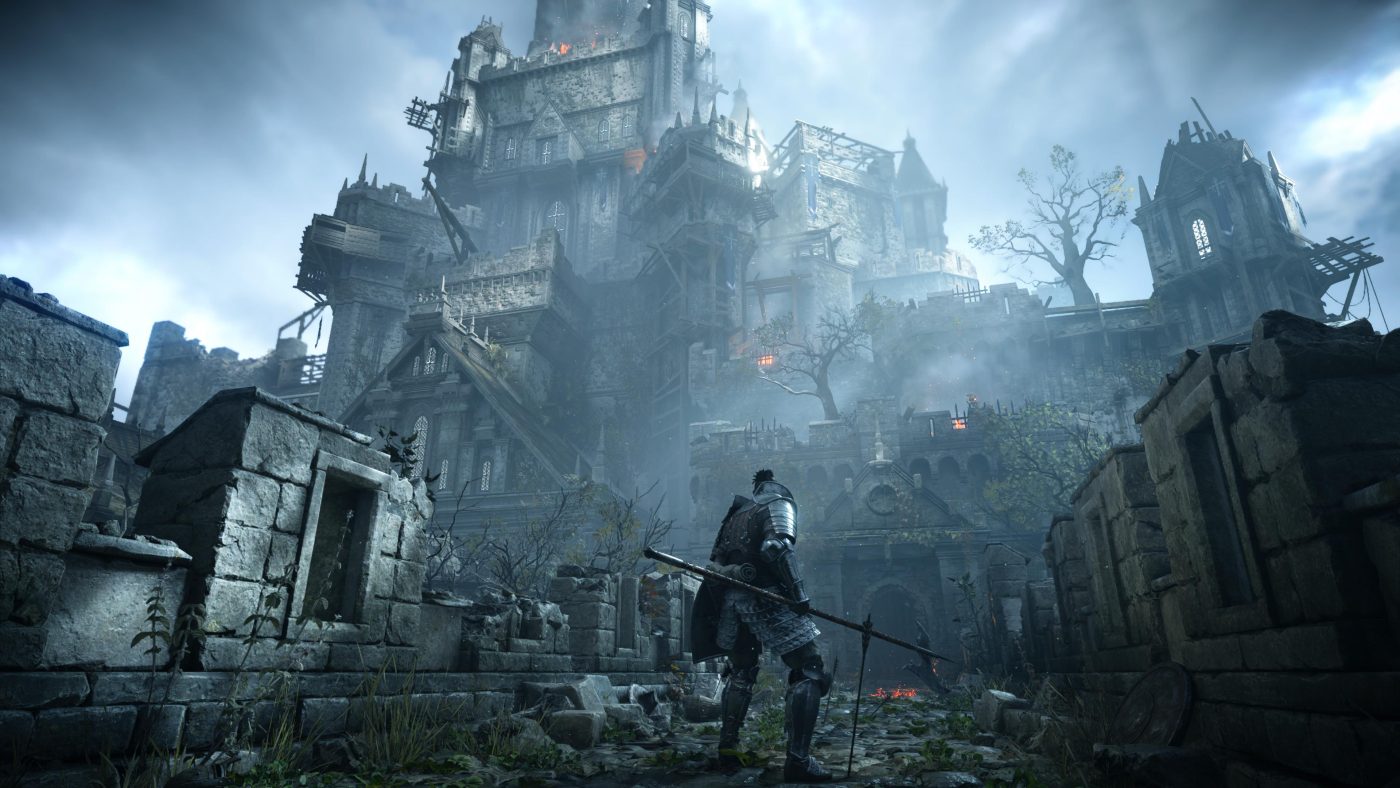
For someone who counts Souls among their favourite game series, but who’s never played the original Demon’s Souls, the most interesting part of Bluepoint’s remake is making these sorts of comparisons as you play, drawing parallels between the gameworld created here and those that would come later. In most respects, however, veterans of From Software’s games will know what to expect. Gameplay involves cautiously pushing through an area, keeping a wary eye out for enemies, traps, ambushes or pitfalls. When you do encounter foes, you invariably end up using arrows or magic to draw them away from their allies so you can take them on one by one. Archstones (read: ‘bonfires’) restore your health but respawn enemies. Souls used for levelling up or buying items are lost upon death. Most levels contain at least one shortcut and end with a boss encounter. Patient, defensive play is rewarded while recklessness and rushing are punished, mercilessly so.
It’s Souls, in other words, and if you like the formula already – the tension, the fine balance of risk and reward, the exhilarating highs and crushing lows – then this remake provides a lot more of it. Demon’s Souls is demanding, unforgiving and often obscure, and that’s even with the addition of tutorial videos you can access at any time. Players new to the series, however, may still find this entry the best place to start. At under 30 hours from beginning to end, it’s a lean game by the standards of other Souls titles. Levels feel shorter and less labyrinthine, the lore not quite as wilfully arcane. Bosses (with a few notable exceptions) tend to have some sort of trick to them and are conquerable after a handful of attempts, less of a roadblock than the often arduous, multi-staged duels of Dark Souls 3 or Sekiro.
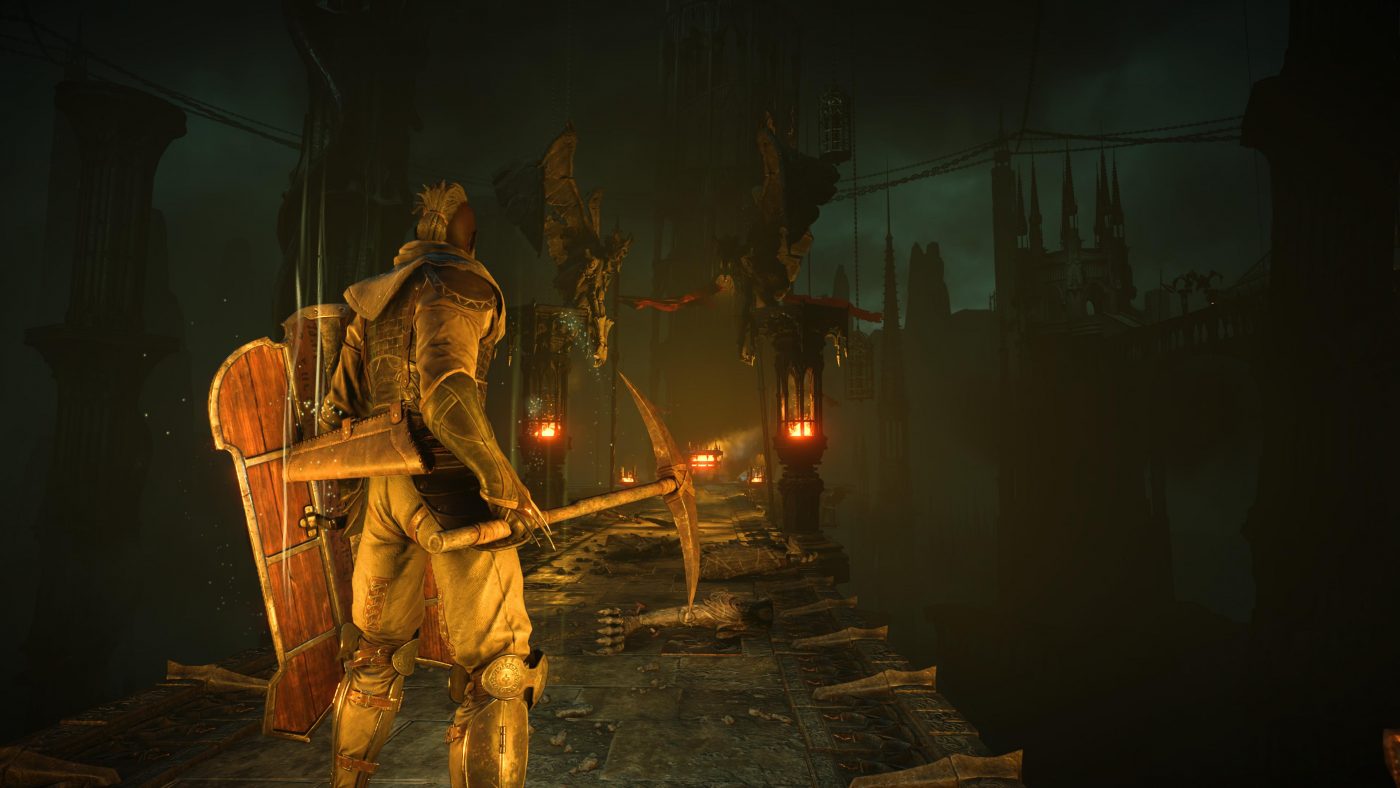
The structure of the game also sets it apart. After defeating the first boss in Boletaria, you’re given access to four other zones you can reach at any time from the Nexus, the hub world you’re whisked away to the first time you die. While having the choice of which way to proceed will be nothing new to Dark Souls players, here the inclusion of fast travel from the off and the way the various zones feel entirely discrete from one another encourages a different style of play. Do you dabble, attempting the first section of each level before proceeding to the next? Or do you commit, pressing forward through an area to face progressively tougher enemies, eventually coming face to face with its mighty archdemon? If you’re having trouble with a particular area or boss, being able to zip back to the Nexus and choose a completely different zone is refreshing, the route through the game feeling less prescribed than it does in later entries, even taking into account the freedom they offer.
The World Tendency system is also new (or is that old?). In a Souls-esque take on the karma systems that were all the rage in RPGs a decade ago, doing good deeds (helping NPCs, killing online players who invade your world) will push your tendency to the ‘White’ side of the spectrum. Make it pure white and you’ll open hitherto locked routes in each level, or gain access to previously fenced off items. Do bad things, however, and you’ll skew your tendency the other way, making enemies tougher and causing elite Black Phantoms to appear, though a darker tendency comes with the carrot of increasing the drop rate of rare items as well as the number of precious souls you receive from downing your foes.
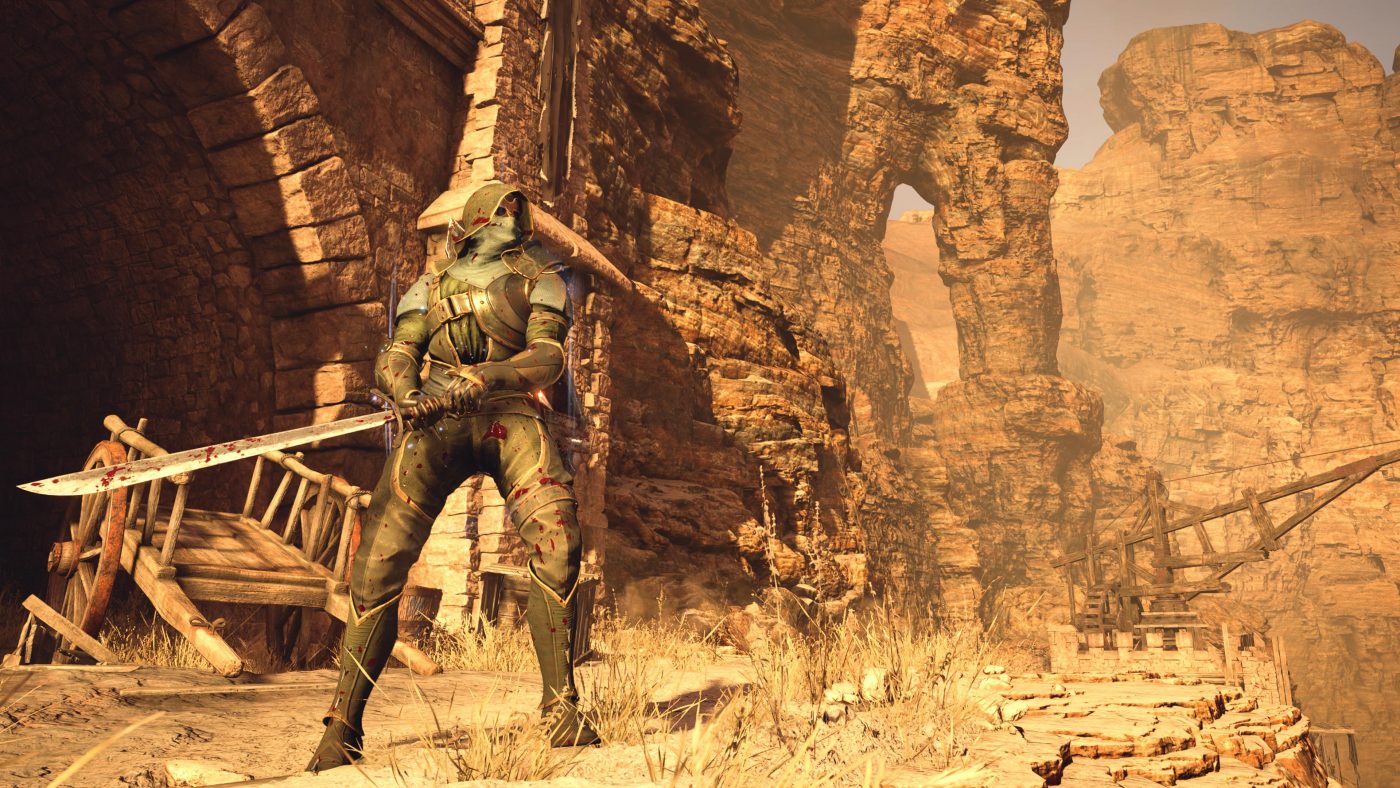
In typical Souls fashion, however, you only learn whether an action has a bearing on your World Tendency once it has been performed, and only then if you happen to look in the menu and compare it with what it was like before. There’s no pop-up to tell you that the world tendency has changed nor warning to say that following a course of action will cause it to. In fact, even dying, at least while in human form – immediately after defeating a boss, for example – in addition to halving your HP will cause you to lose a big chunk of white world tendency. Seeing as it’s all too easy to irreparably darken your tendency, players wishing to keep theirs pure and see all areas that the game has to offer in a single run are encouraged to return to Soul form by killing themselves in the safety of the Nexus before proceeding. Suddenly all those bloodstains – remnants of other players’ dying moments – you find at the top of the big staircase here make sense.
The most apparent change to the game, however, is the complete graphical overhaul it’s received. After the brilliant work they did on the Shadow of the Colossus update back in 2018, Bluepoint have outdone themselves here: this, surely, is the best-looking launch game ever released. From the start you’re offered the choice of ‘Cinematic mode’ – native 4K at 30 frames per second – or ‘Performance mode’ – dynamic 4K at 60. Playing the game with the latter of these two settings enabled is what feels most palpably ‘next gen’. Never has Souls felt so god-damned smooth and looked so beautiful at the same time, the entirely rebuilt lighting, textures and character models impressive to the point of becoming distracting. The addition of a (highly addictive) photo mode would suggest that the developers are well aware of how easy their game is on the eyes. Even if the Flamelurker does insist on tossing you around like a rag doll, at least you’ll get a good few shots out of it.
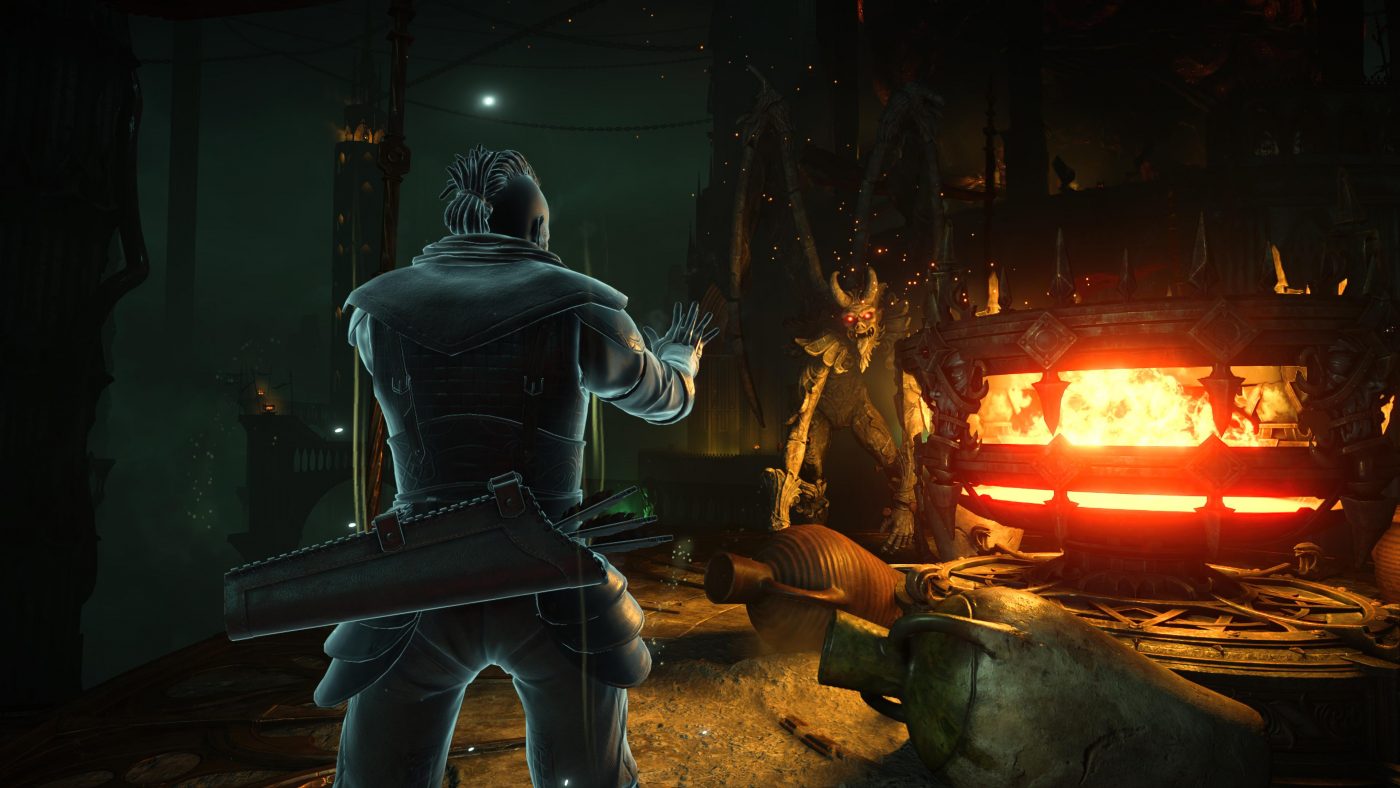
It’s a shame, therefore, that the immersion in this fantastical, horrifying world is so frequently broken, though this comes from the remaker’s loyalty to the original release rather than any issue with how the game looks. The braindead AI feels the most out of place in 2021. Shooting one enemy soldier in a group and having his fellows just stand there, unblinking, waiting for their turn to be impaled, is often laughably ridiculous. Enemies, generally, are too static. They mostly just stand around, patiently staring off into space until you happen to step inside their bubble of awareness, at which point they immediately rush you. Other little foibles also irritate. Things like the hit detection around objects: all too often you’ll fire an arrow at a target across the room only to see it embed itself in a invisible barrier half a foot above a balustrade, or some other sort of scenery. Enemy attacks clip through walls. The camera takes the occasional rogue turn at some fatal moment. Any kind of platforming section seems to be a complete crapshoot as to whether you’ll survive or fall instantly to your death. These are all quirks that Souls fans have accepted and turned a blind eye to for over ten years now, but in a game of such graphical fidelity as this one, a flagship exclusive for Sony’s new console, their datedness feels far more noticeable through juxtaposition.
Which is not to say that Demon’s Souls isn’t worth your time. From’s level design and creativity coupled with Bluepoint’s superlative spit and polish was always going to make for an entertaining package, and this is assuredly the case here. Like every other game in the developer’s arsenal of the past decade, this is a deeply compelling and often wondrous experience. For the Souls fan, however, its adherence to its source material, warts and all, makes it at once a peerless tribute to the original game but also a reminder that the formula has perhaps had its day now. With leaks this month of the upcoming Elden Ring, players can only hope that release is as important for videogames as this one was back in 2009.
